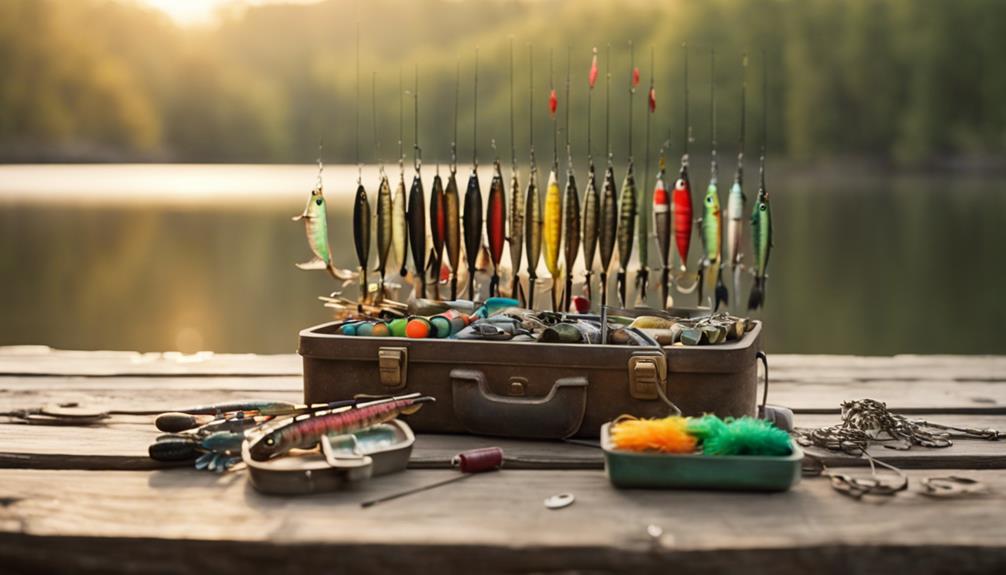Understanding Flies in Fly Fishing
Fly fishing is a unique and exciting method of angling that relies heavily on the use of artificial flies to attract fish. These flies come in various designs, shapes, and sizes, each tailored to mimic the natural prey of the fish being targeted. Understanding the different types of flies is essential for any angler looking to master this art. Common types of flies include dry flies, which float on the water’s surface; wet flies that sink below the surface; and nymphs that imitate the larval stage of aquatic insects. Each fly has its specific purpose, and knowing when and how to use them is crucial for successful fly fishing.
The Importance of Choosing the Right Fly
Choosing the right fly can be the difference between a fruitful day on the water and a frustrating one. The right fly will depend on various factors, including the species of fish you’re targeting, the time of year, and the specific water conditions. For instance, during the spring, you might find that mayfly imitations are particularly effective, while in the summer, grasshoppers or terrestrial patterns can draw more strikes. To increase your chances of success, it’s essential to research local entomology and understand which insects are prevalent in the waters you’ll be fishing. This knowledge will enable you to select flies that effectively mimic the local food sources.
Types of Flies: A Comprehensive Overview
When it comes to flies, there are several types to consider. Dry flies are designed to float on top of the water, mimicking adult insects that fish feed on. Wet flies, on the other hand, are typically submerged and imitate nymphs or other underwater organisms. Streamers are larger flies that resemble baitfish or other aquatic creatures, designed to entice predatory fish. Additionally, there are specialized flies such as terrestrials, which mimic insects like ants and beetles that may fall into the water. Understanding these classifications and their applications will enhance your fly fishing experience.
Essential Techniques for Fly Fishing
Mastering fly fishing techniques is vital for both novice and experienced anglers. Casting is one of the most critical skills; it involves using a fly rod to present the fly delicately on the water’s surface. The overhead cast and roll cast are two fundamental techniques every fly fisherman should learn. Additionally, understanding the drag-free drift is crucial, as it allows the fly to move naturally in the current, making it more enticing to fish. Practicing these techniques on dry land before hitting the water can help improve your accuracy and presentation.
Understanding Fish Behavior and Feeding Patterns
To effectively use flies in fly fishing, it’s essential to understand fish behavior and feeding patterns. Fish are influenced by various factors, including water temperature, weather conditions, and time of day. For instance, many fish species are more active during dawn and dusk when they are likely to feed. Additionally, understanding the relationship between specific fish species and their preferred food sources will guide your fly selection. Observing water conditions and noting any surface activity can also provide insights into what flies might be most effective at any given moment.
Fly Tying: Crafting Your Own Flies
Fly tying is an integral part of the fly fishing experience, allowing anglers to create custom flies tailored to their local waters. By learning to tie your own flies, you can experiment with different materials, colors, and designs to match the specific insects that fish are feeding on at any time. Basic fly tying involves using materials such as feathers, fur, and synthetic fibers, all of which can be combined in various ways to create effective patterns. Numerous resources are available, including books, online tutorials, and local workshops, making it easier than ever to get started with this rewarding hobby.
Fly Fishing Gear: What You Need for Success
Having the right gear is crucial for a successful fly fishing experience. Essential equipment includes a fly rod, reel, and line, as well as a selection of flies that suit your target species. Waders and boots are also important for staying dry and comfortable while fishing in various water conditions. Additionally, a fly box to organize your flies, a landing net for safely catching fish, and a good pair of polarized sunglasses to reduce glare and spot fish beneath the surface are all valuable investments. Each piece of gear plays a role in enhancing your fly fishing experience.
Fly Fishing Locations: Where to Cast Your Line
Choosing the right location for fly fishing can significantly impact your success. Many anglers seek out rivers, streams, and lakes known for their abundant fish populations. Researching local fishing reports, talking to experienced anglers, and exploring areas with good aquatic insect life can help you identify the best spots. National parks and wildlife reserves often provide excellent fishing opportunities, but be sure to check local regulations and obtain any necessary permits. Whether you’re fishing in freshwater or saltwater, a well-chosen location can lead to memorable fishing experiences.
In conclusion, flies and fly fishing offer an engaging and rewarding way to connect with nature while pursuing the thrill of angling. By understanding the different types of flies, mastering essential techniques, and utilizing the right gear, you can enhance your fly fishing experience significantly. Whether you’re a beginner or a seasoned pro, embracing the art of fly fishing can lead to countless adventures and unforgettable memories on the water. Happy fishing!
